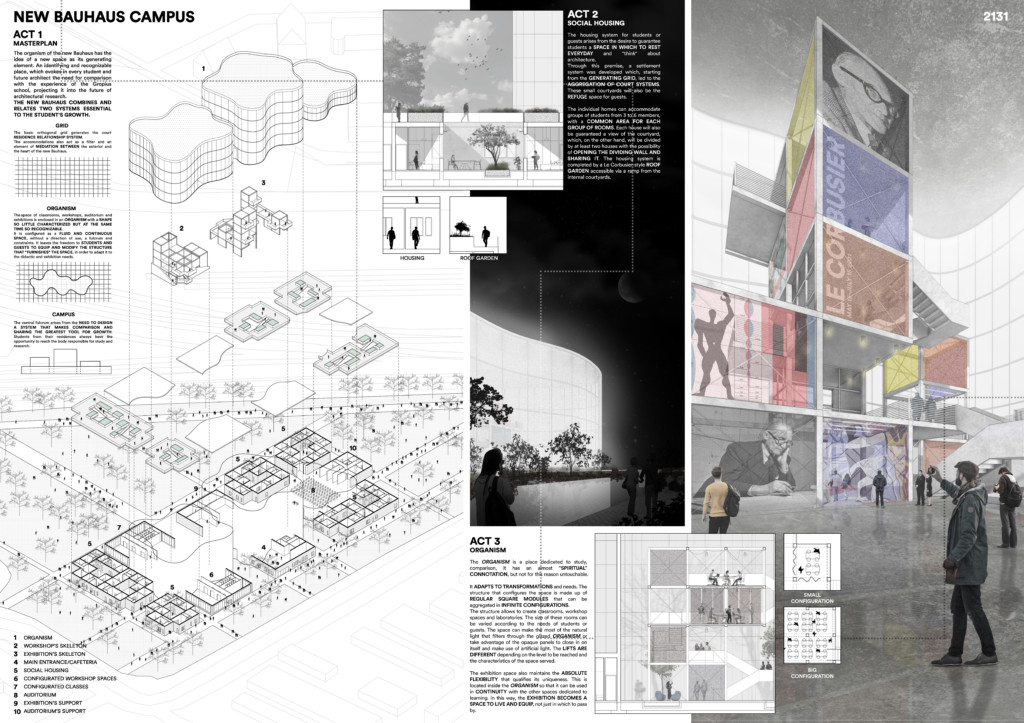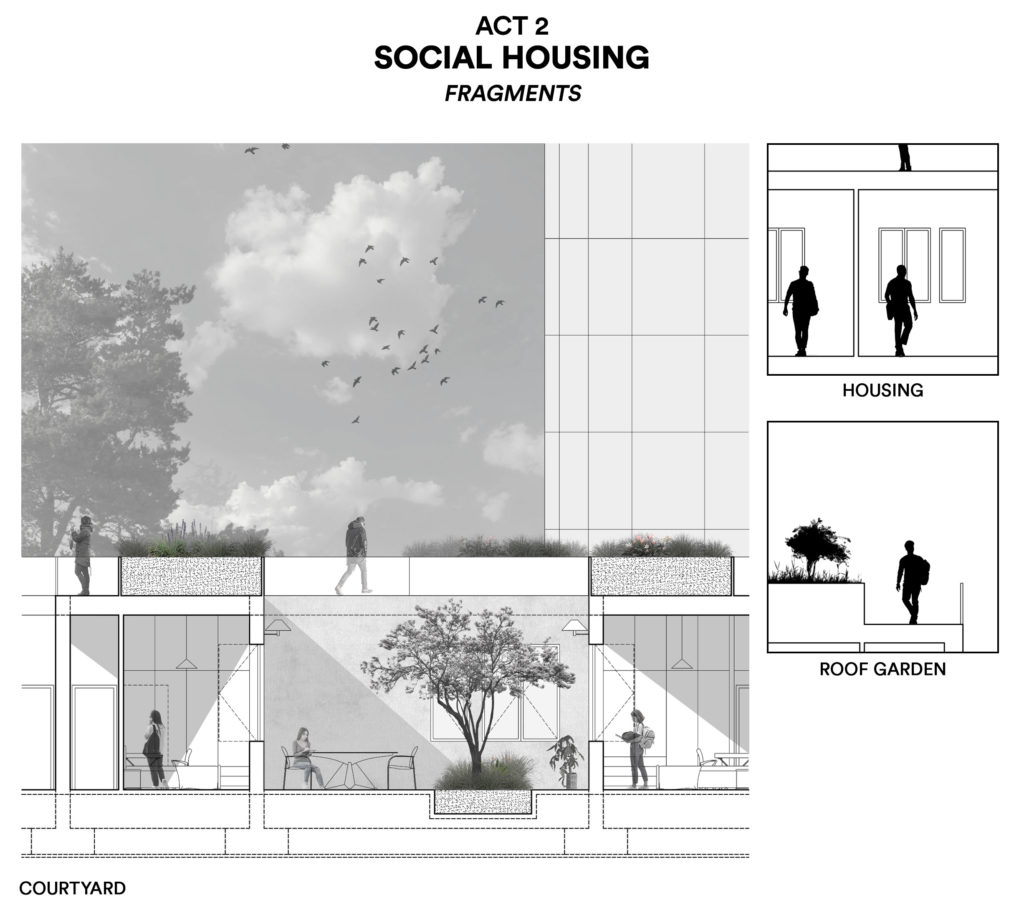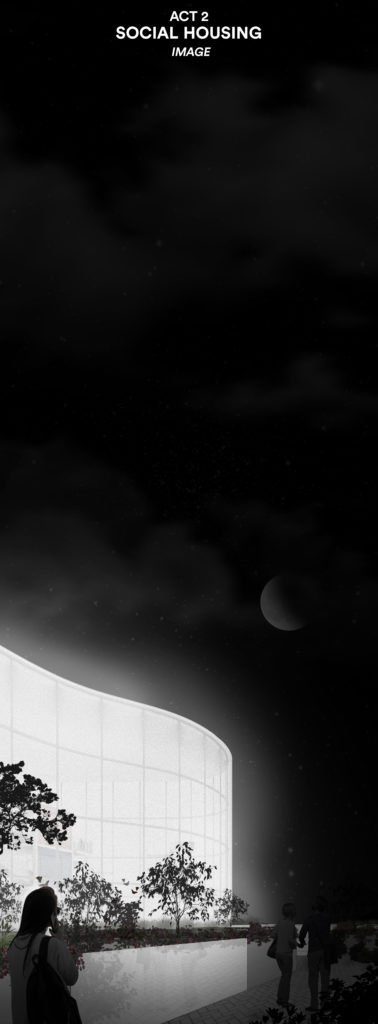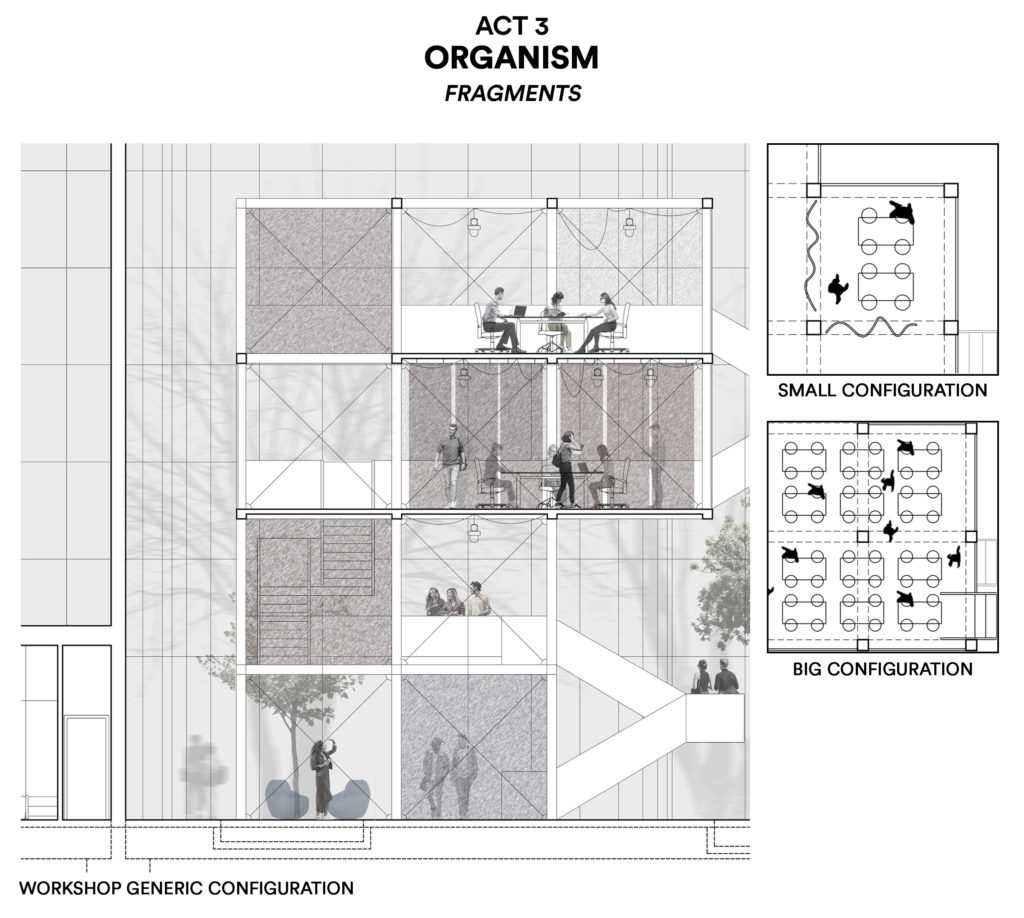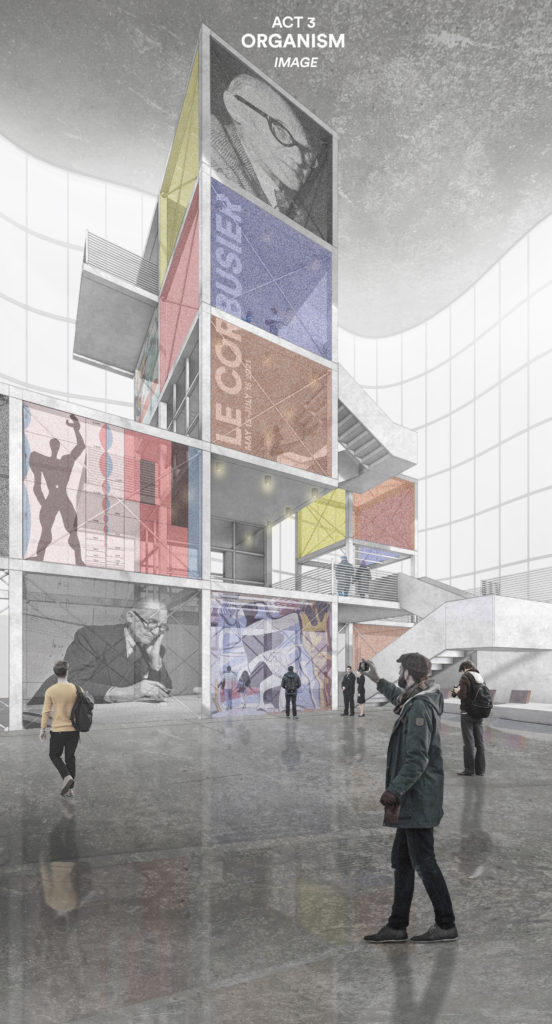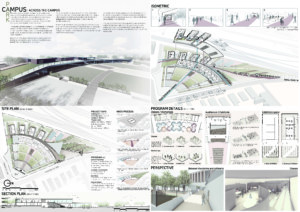ACT 1
MASTERPLAN
The organism of the new Bauhaus has the idea of a new space as its generating element. An identifying and recognizable place, which evokes in every student and future architect the need for comparison with the experience of the Gropius school, projecting it into the future of architectural research. The new Bauhaus combines and relates two systems essential to the student’s growth.
GRID
The basic orthogonal grid generates the court residence relationship system. The accommodations also act as a filter and an element of mediation between the exterior and the heart of the new Bauhaus.
ORGANISM
The space of the classrooms, workshops, auditorium and exhibitions is enclosed in an organism with a shape so little characterized but at the same time so recognizable. It is configured as a fluid and continuous space, without a direction of use, a fulcrum and constraints. It leaves the freedom to students and GUESTS to equip and modify the structure that “furnishes” the space, in order to adapt it to the didactic and exhibition needs.
CAMPUS
The central fulcrum arises from the need to design a system that makes comparison and sharing the greatest tool for growth. Students from their residences always have the opportunity to reach the body responsible for study and research.
ACT 2
SOCIAL HOUSING
The housing system for students or guests arises from the desire to guarantee students a space in which to rest everyday and «think» about architecture. Through this premise, a settlement system was developed which, starting from the generating grid, led to the aggregation of court systems. These small courtyards will also be the refuge space for guests. The individual homes can accommodate groups of students from 3 to 6 members, with a common area for each group of rooms. Each house will also be guaranteed a view of the courtyard, which, on the other hand, will be divided by at least two houses with the possibility of opening the dividing wall and sharing it. The housing system is completed by a Le Corbusier-style roof garden accessible via a ramp from the internal courtyards.
ACT 3
ORGANISM
The organism is a place dedicated to study, comparison, it has an almost “spiritual” connotation, but not for this reason untouchable. It adapts to transformations and needs.
The structure that configures the space is made up of regular square modules that can be aggregated in infinite configurations. The structure allows to create classrooms, workshop spaces and laboratories. The size of these rooms can be varied according to the needs of students or hosts.
The space can make the most of the natural light that filters through the glazed organism or take advantage of the opaque panels to close in on itself and make use of artificial light. The lifts are different depending on the level to be reached and the characteristics of the space served.
The exhibition space also maintains the absolute flexibility that qualifies its uniqueness. This is located inside the organism so that it can be used in continuity with the other spaces dedicated to learning. In this way, the exhibition becomes a space to live and equip, not just in which to pass by.
